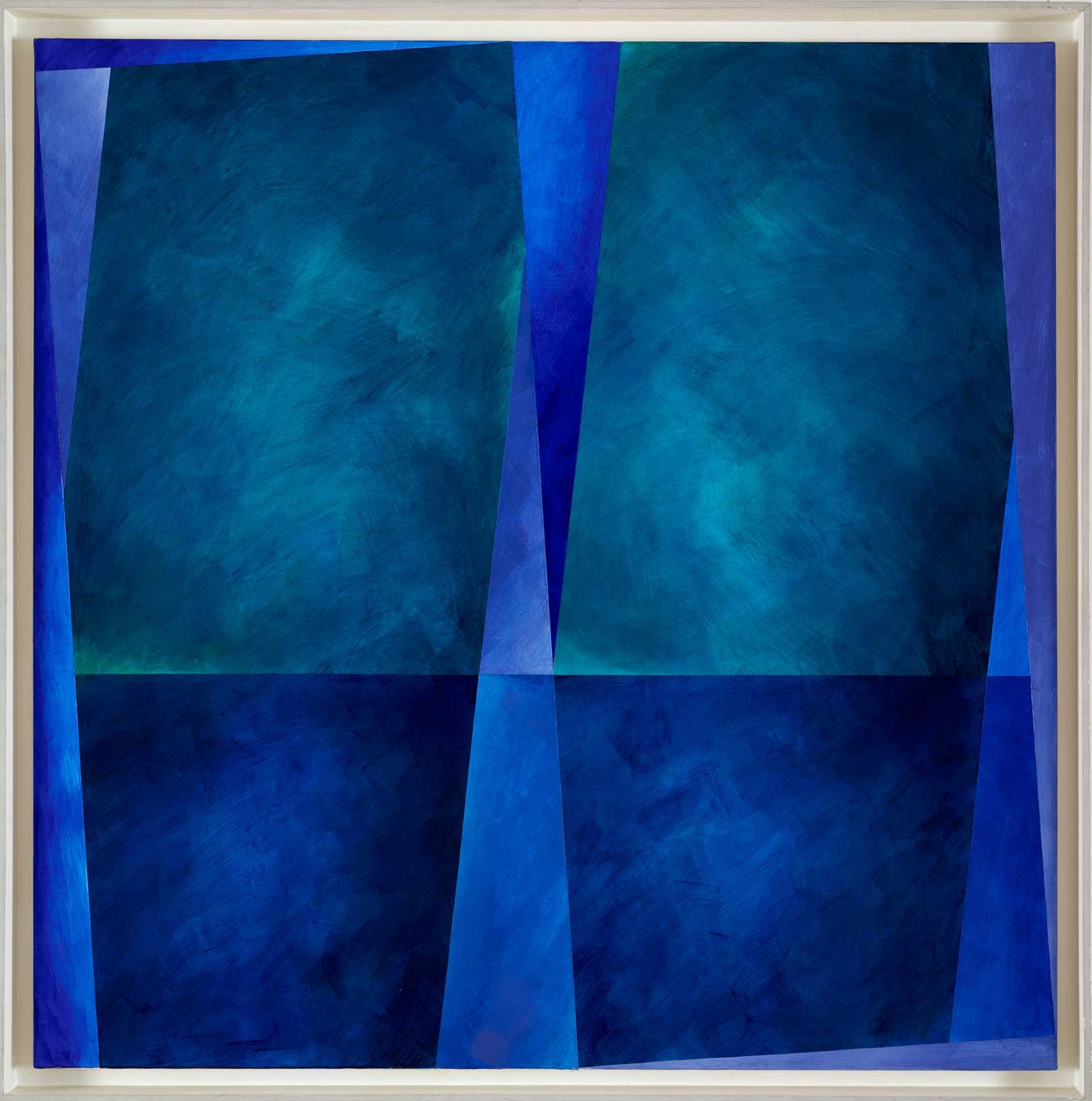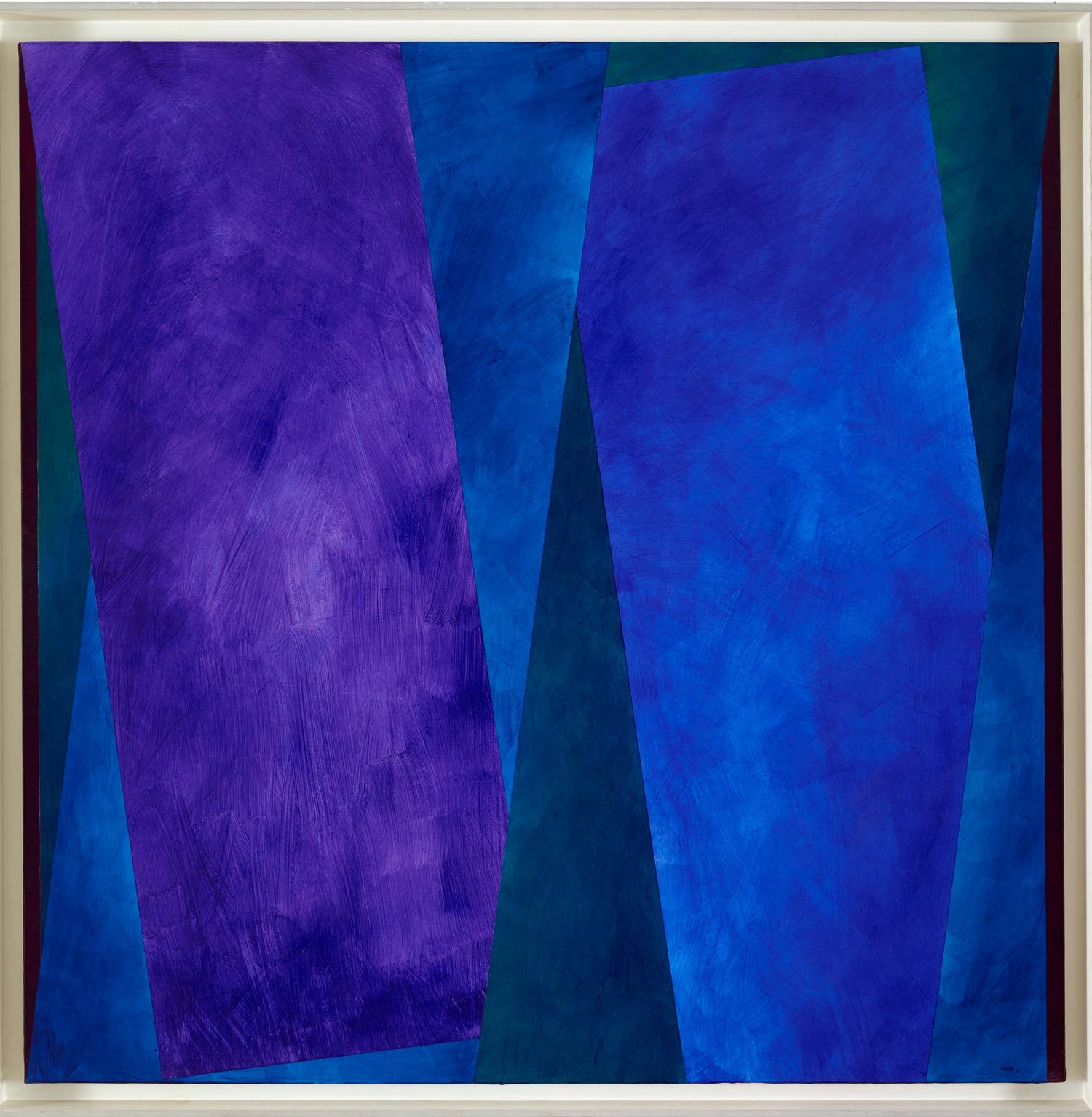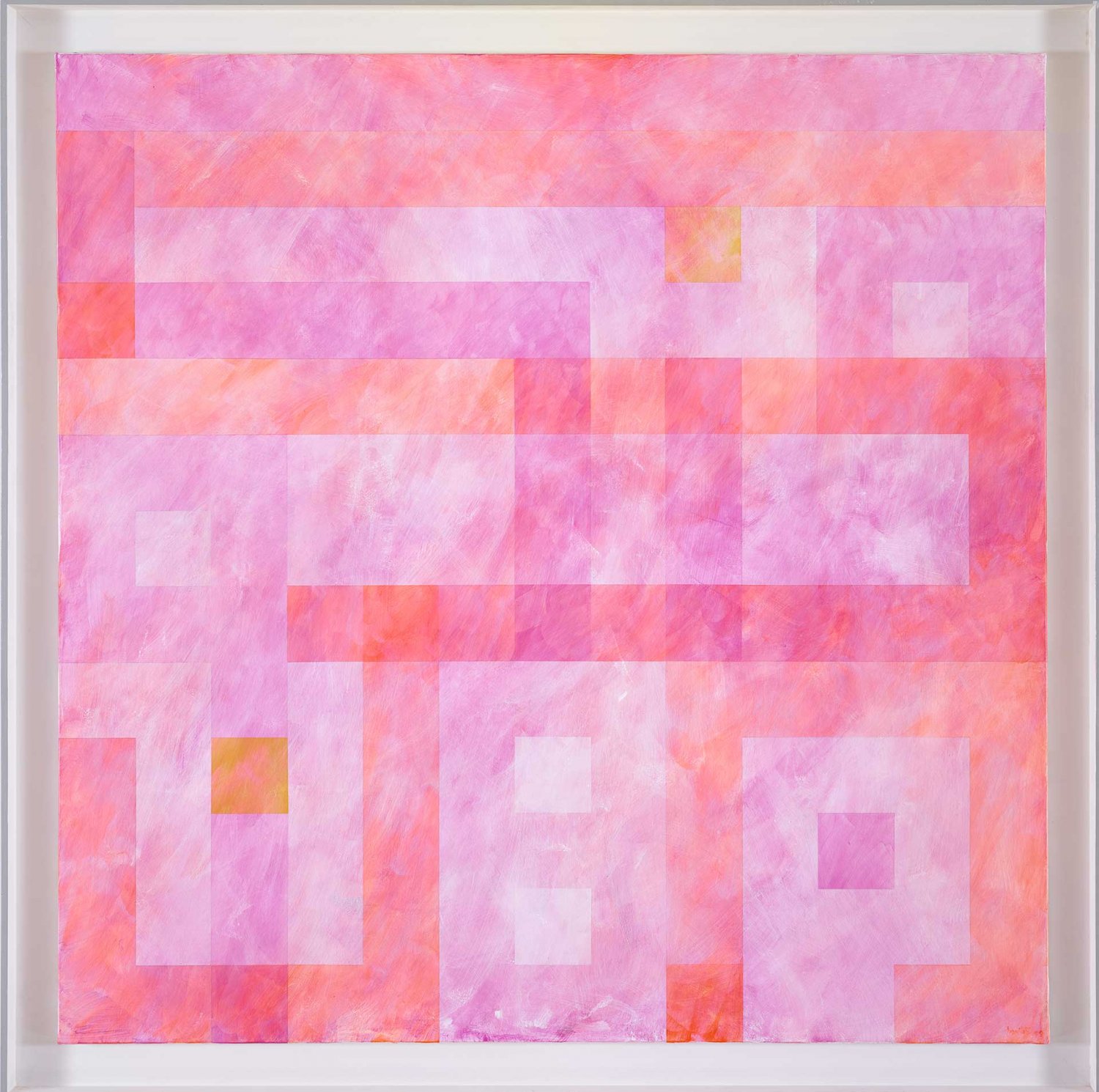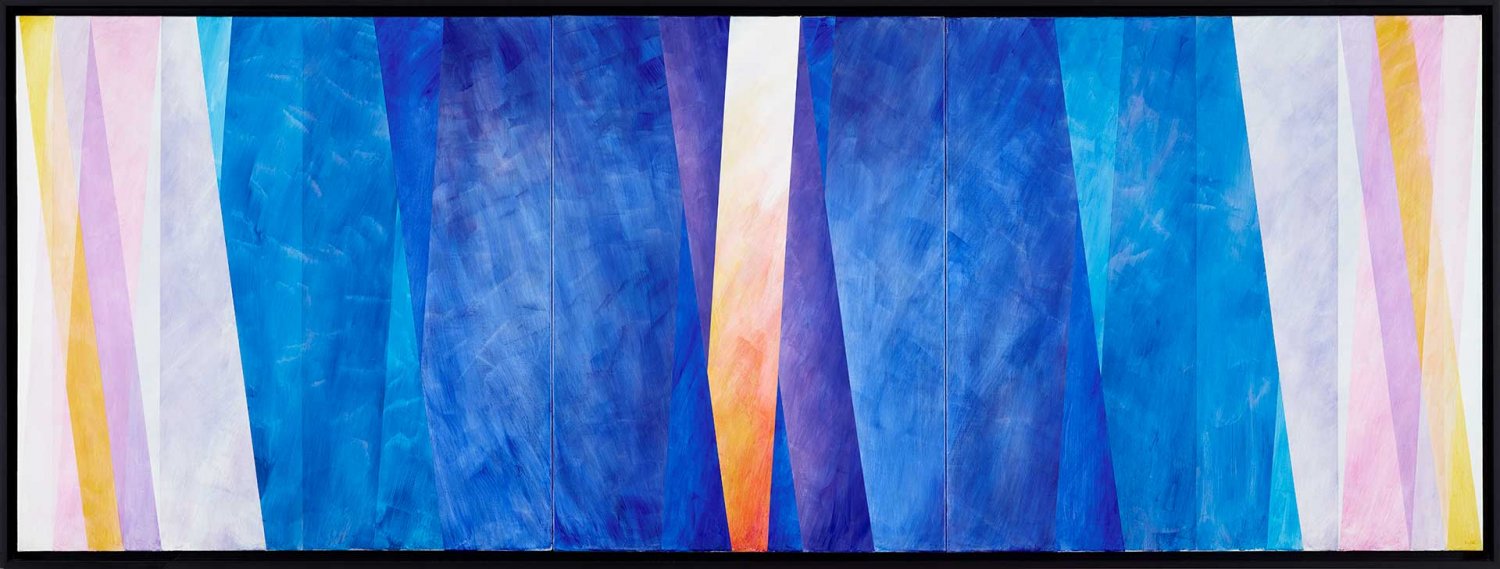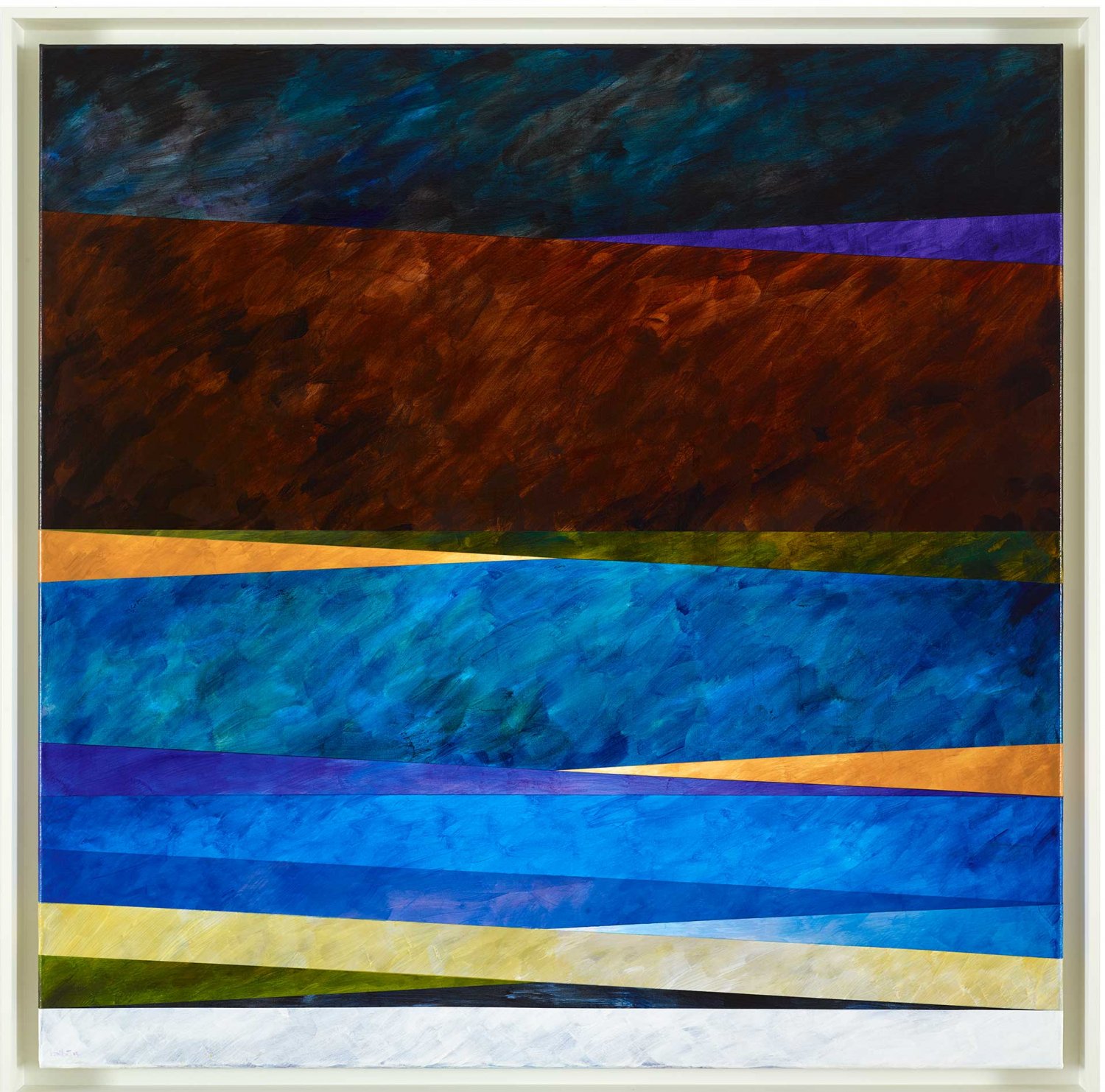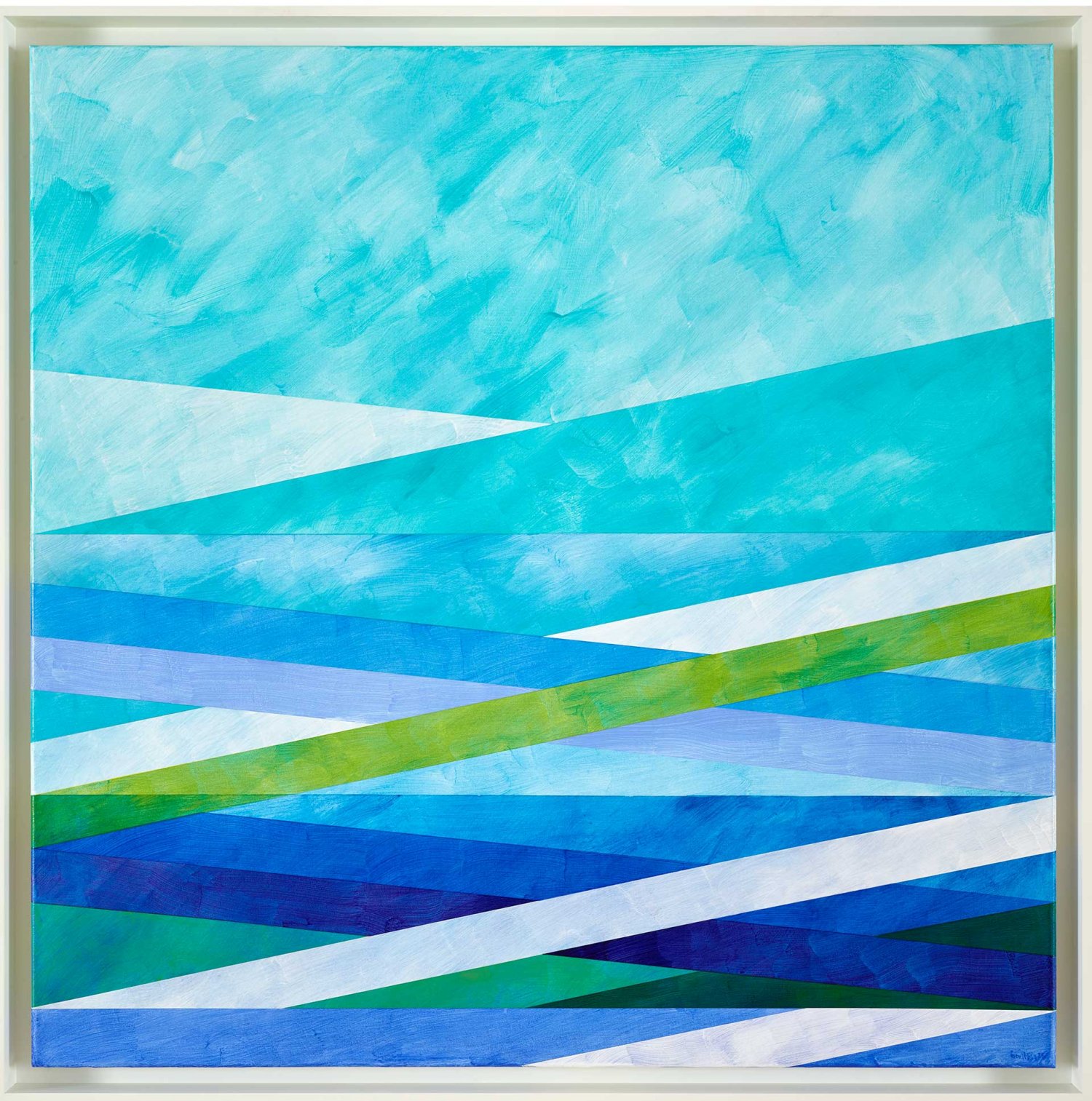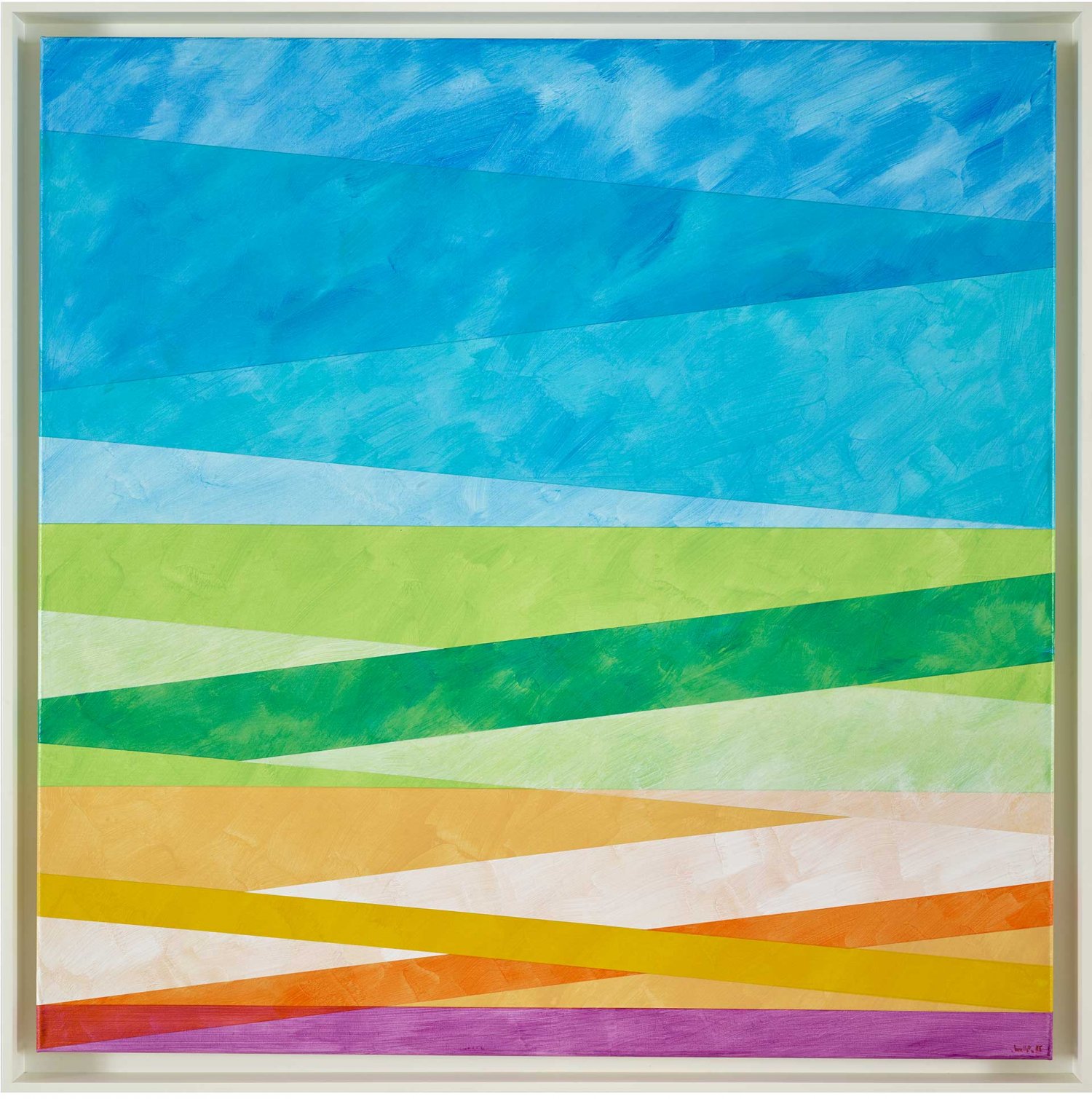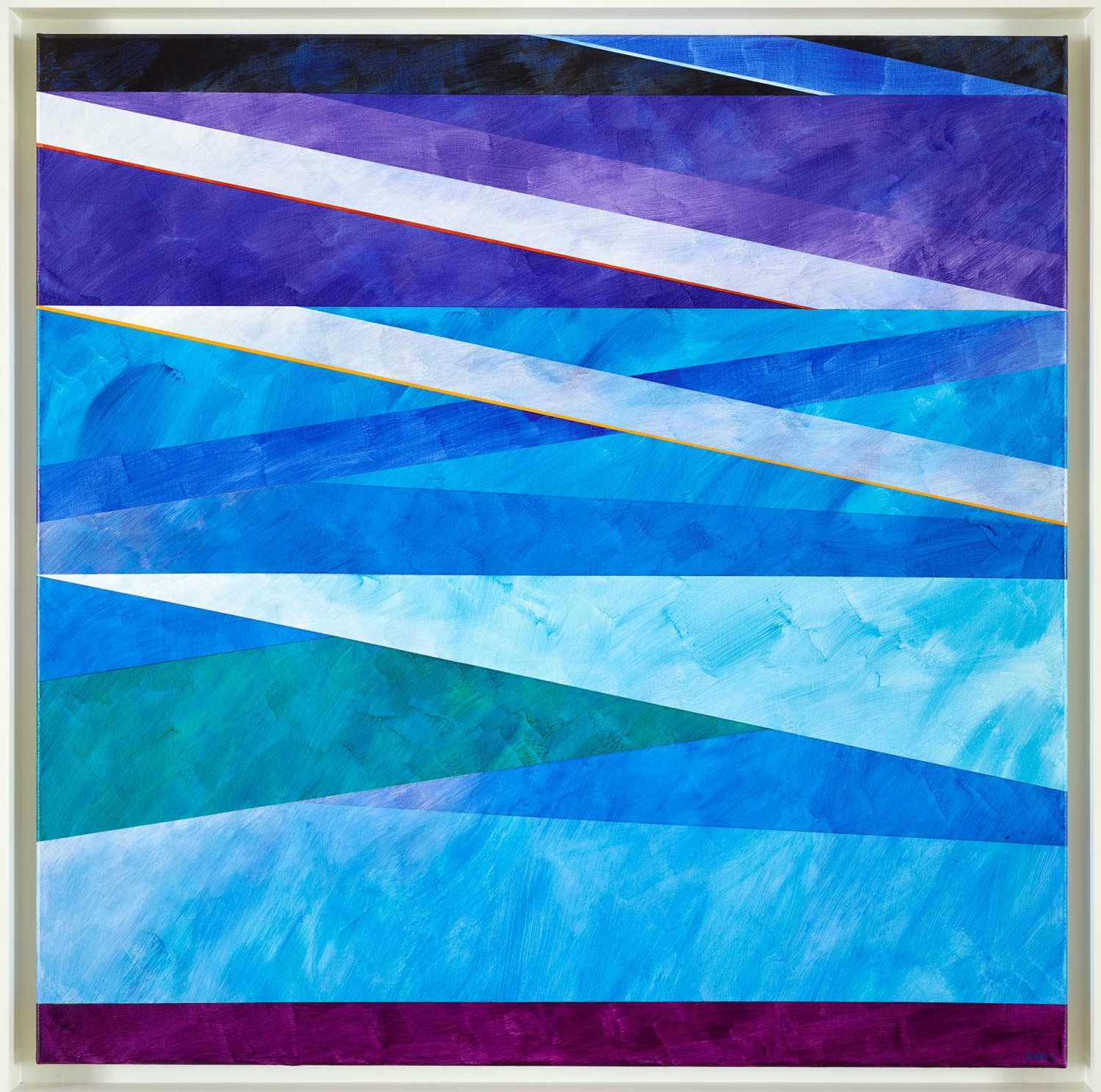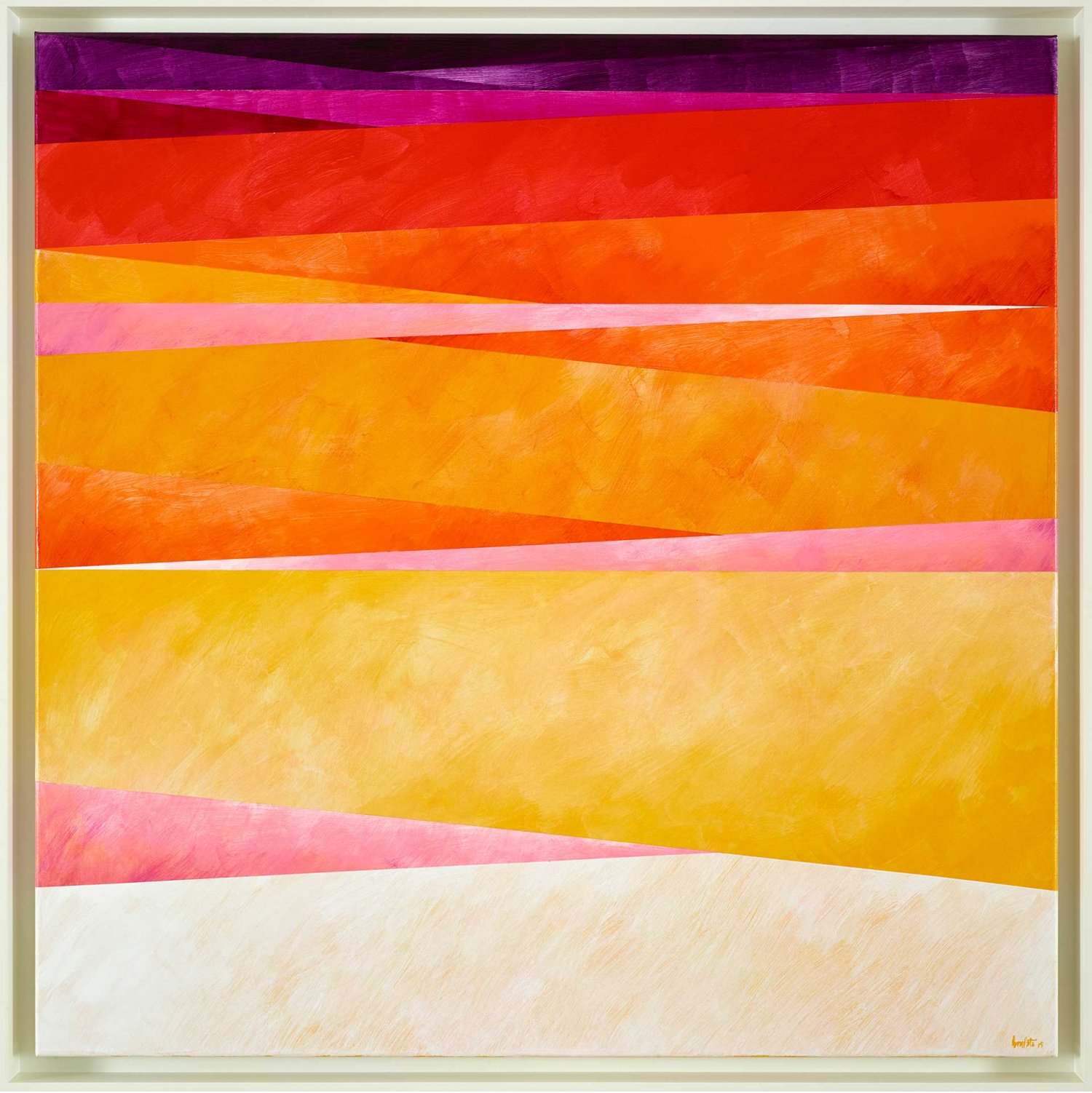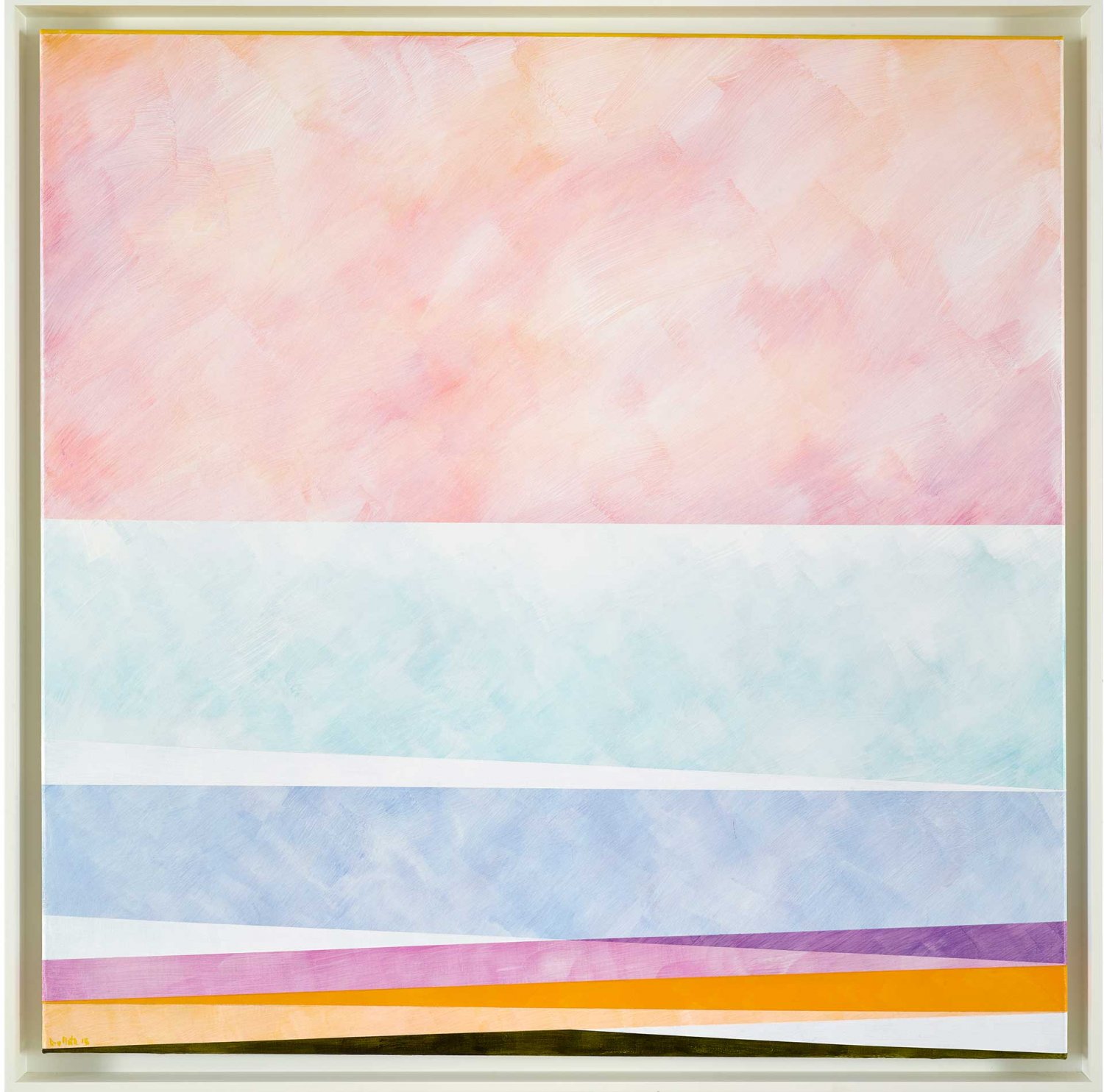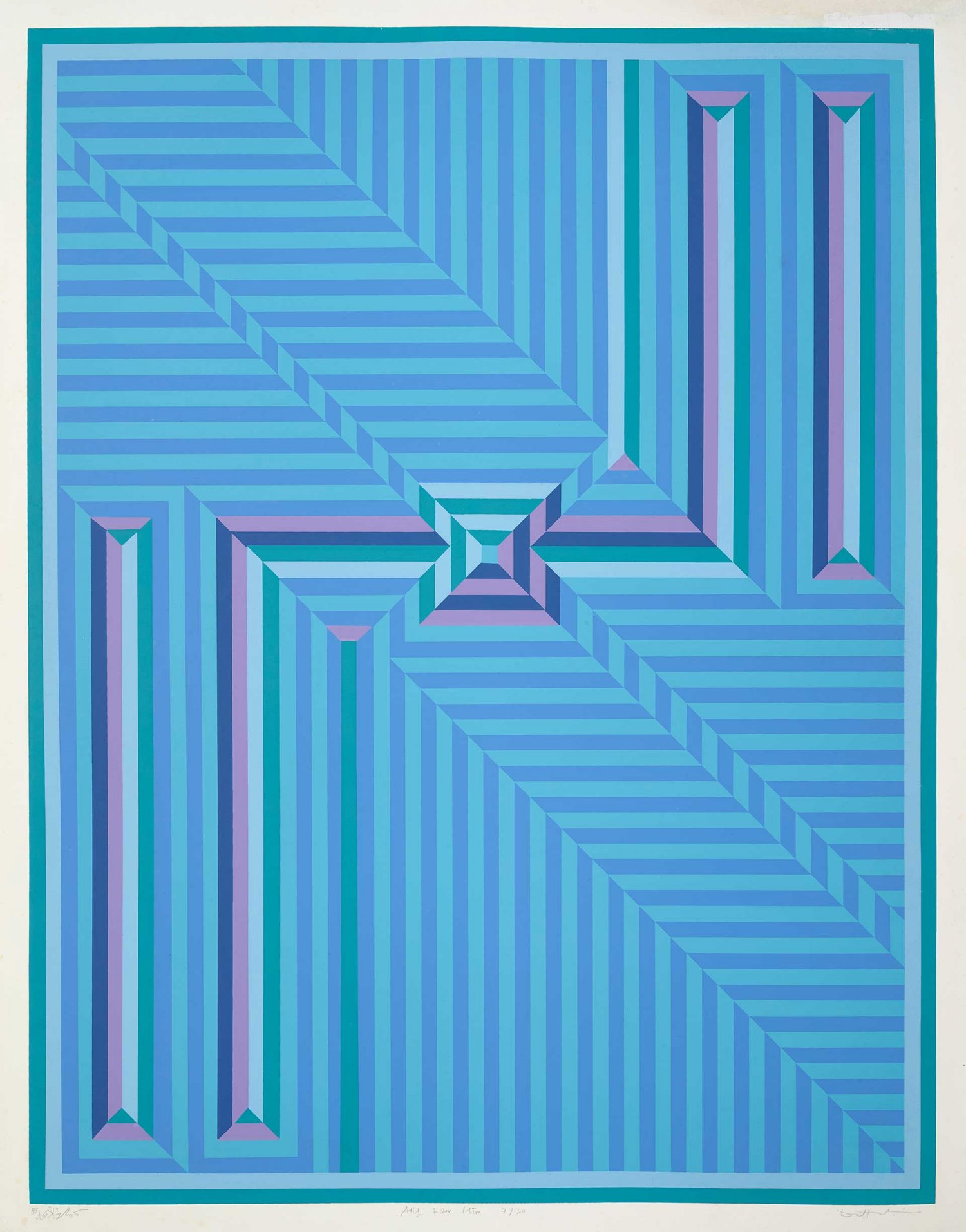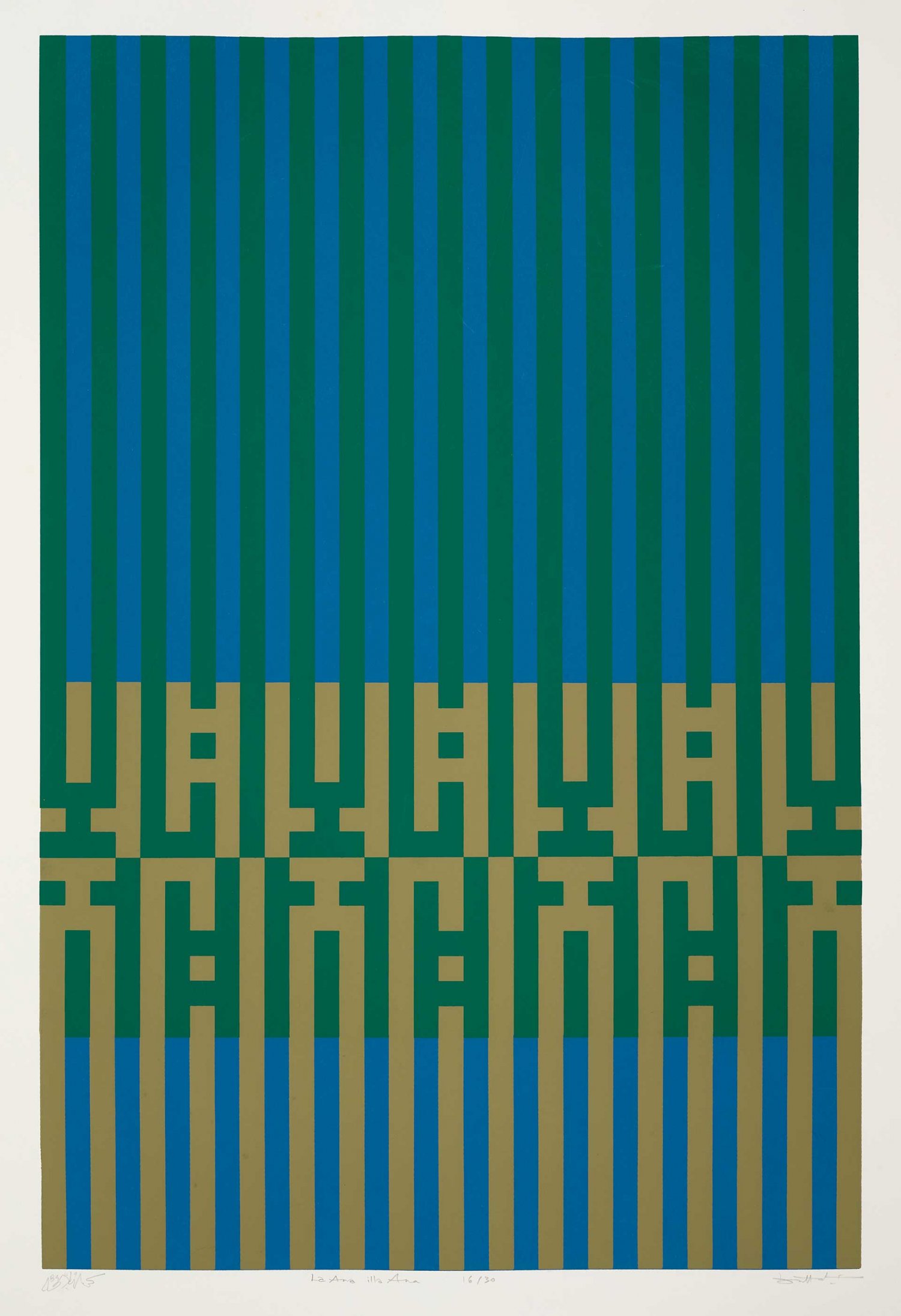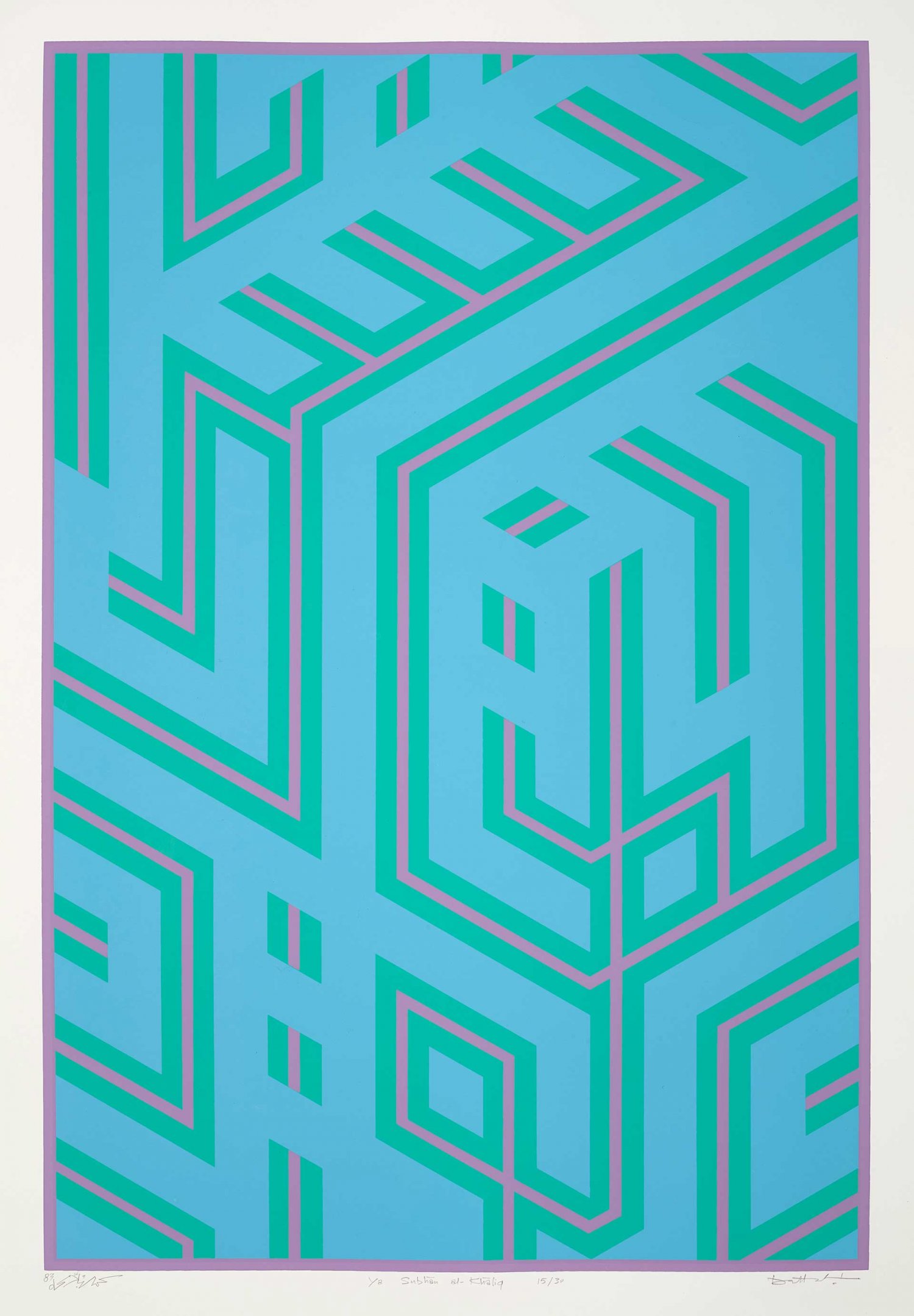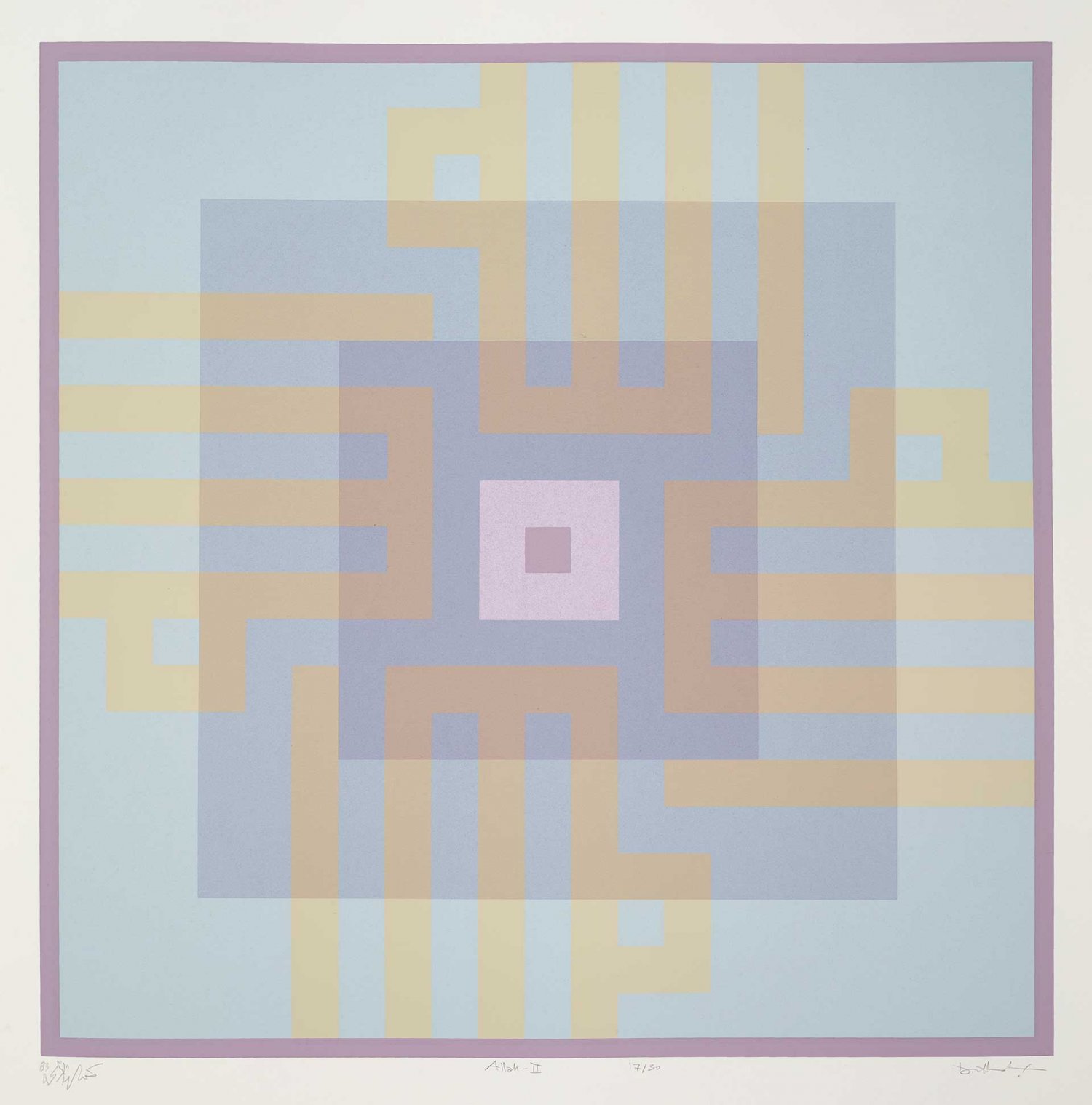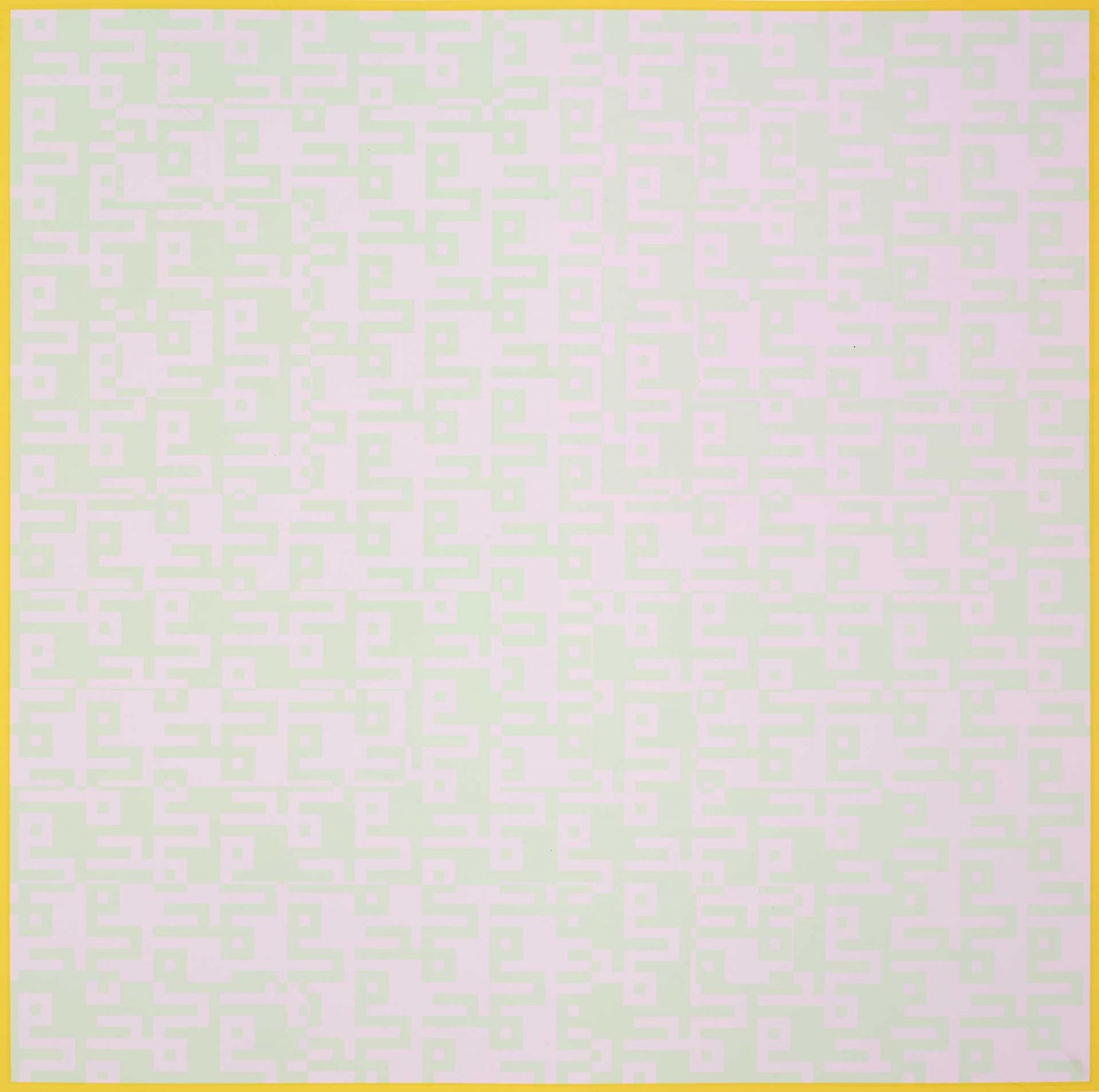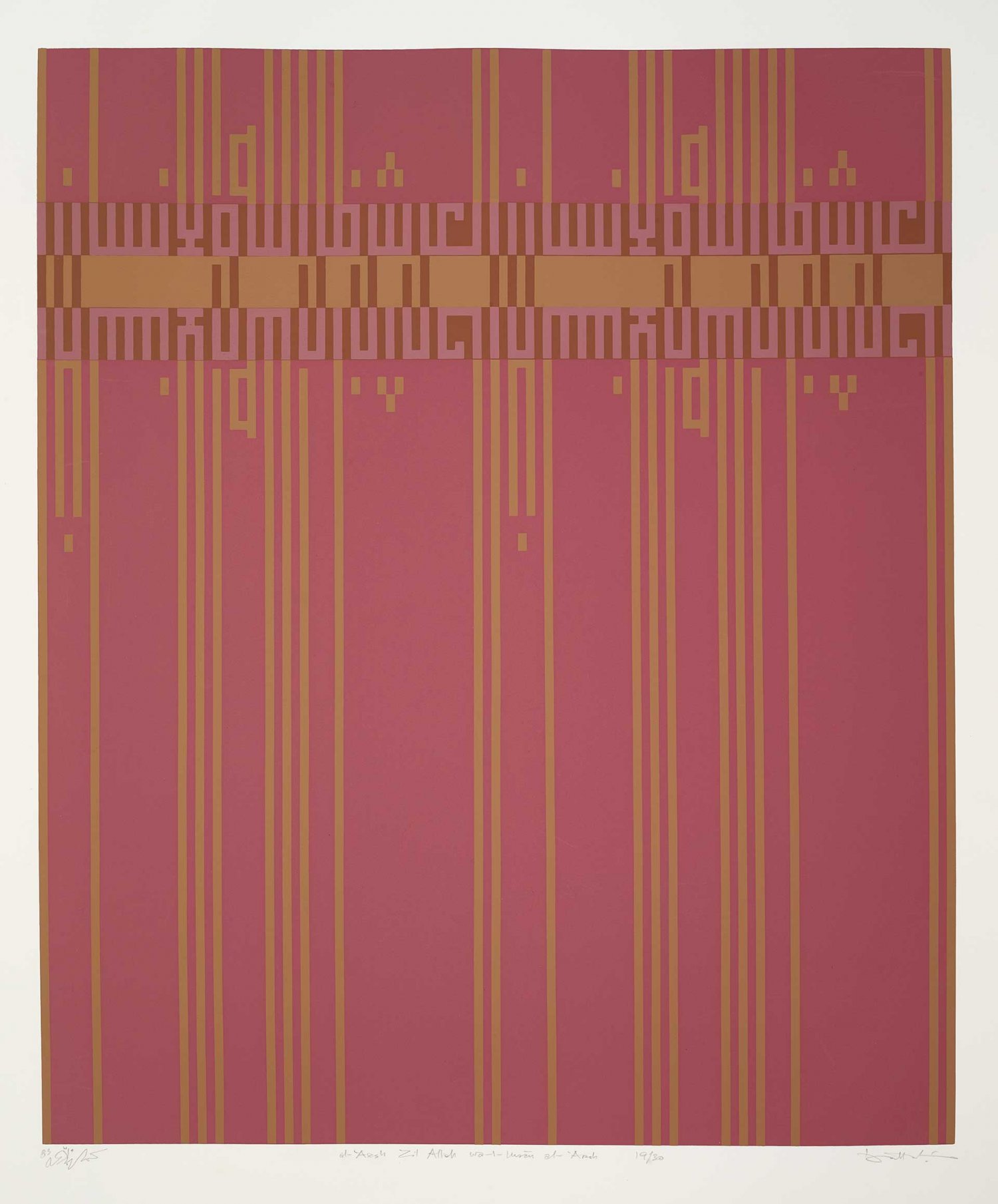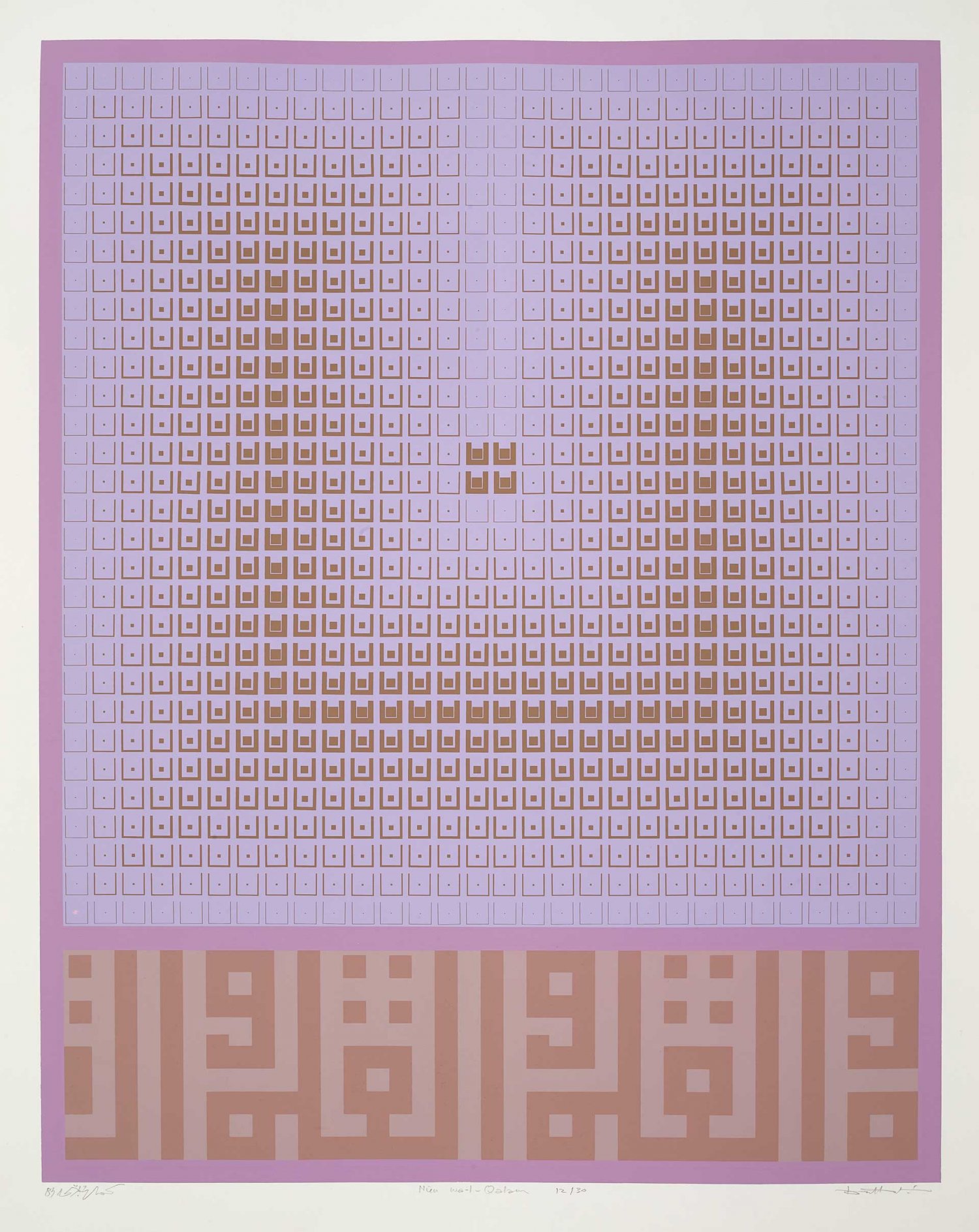Jerusalem-born Palestinian artist Kamal Boullata created an impressive body of work consisting of art as well as essays and books. As an artist, art historian, culture critic, and advocate for Arab artists, his work delved into the tensions between exile and belonging.
Boullata often created silkscreens and paintings (acrylic on canvas). He frequently explored Arabic script, particularly the geometric Kufic style, a fascination that originated in childhood when he was growing up in the Christian Quarter of the Old City in close proximity to the Dome of the Rock, with its inscriptions. He later shared that he had spent hours there as a child, sketching them. His art of inscriptions spanned sayings from all three Abrahamic religions “perhaps to suggest the importance of transcending religious divisions and asserting the unity of his homeland.”1 His geometric abstract paintings frequently drew on ancient myths.
Light was a source of inspiration for Boullata, and partly out of longing. According to Palestinian artist Steve Sabella, who was a good friend of Boullata’s: “He [Boullata] ventured towards light in his paintings, and once said that the light of Jerusalem is perhaps what he had been always attempting to capture . . . Though the pain of him losing Palestine, his homeland, was so great, he channeled that anguish through his art and writing and ultimately, everything he produced was about light and transcendence.”2
Historian Steve Tamari characterizes Boullata’s work as one of “dynamism . . . driven by point and counterpoint, and by dialectical oppositions” as he continued to search for “new answers and modes of expression that could address the discord between belonging and exile, autobiography and history, word and geometry, abstraction and color, writing and painting.”3 Others have observed that abstracting Jerusalem allowed Boullata to recreate it.
A Jerusalemite who lived most of his life in involuntary exile—in the United States, Morocco, France, and finally Germany—he revisited the theme of Jerusalem again and again; it was the one constant.
To learn more about Kamal Boullata’s life and work, read his bio here.

